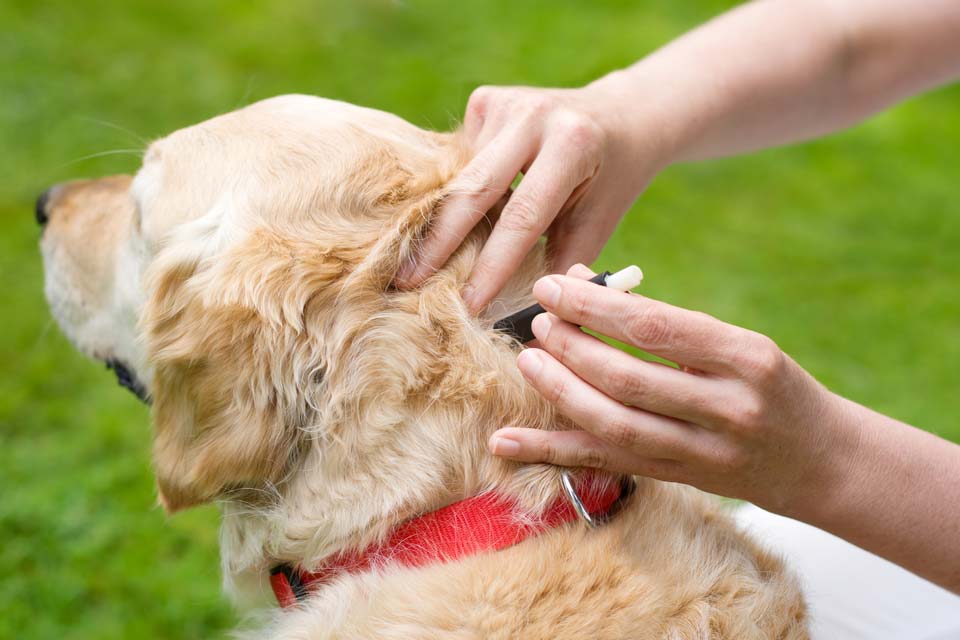How To Remove Ticks
 Summer is here, the days are longer, and we are spending more time outside. Our dogs are outdoors more often and for longer periods of time. And the ticks are waiting!
Summer is here, the days are longer, and we are spending more time outside. Our dogs are outdoors more often and for longer periods of time. And the ticks are waiting!
Even your indoor kitty is at risk of tick bites or infestation. Ticks are accomplished hitchhikers and can be transferred into the home on clothing, tools, furniture, and any other item that enters your home from the outside. Once inside they will lie in wait for a warm mammal to brush by them, then attach themselves and be on their way to a warm blood meal.
Besides being just plain icky, ticks are a health hazard to humans and pets. They are known to transmit tick-borne disease (TBD). Lyme disease, Rocky Mountain Spotted Fever, Rickettsiosis, Babesiosis, Tickborn Relapsing Fever, are just a few. TBD can range from simply annoying, to serious or fatal for you and your pets.
Regular use of a high-quality flea and tick prevention product like Frontline Plus for Dogs is a recommended measure. Daily inspection of your pets while grooming is an excellent way to discover a tick.
If you find a tick that has attached itself, engorged with blood or not, you can remove it safely if you follow these guidelines. It’s a good idea to keep removal supplies on hand so they are readily available if and when you might need them.
Items needed:
- sharp tweezers or Ticked Off tick removal tool
- gloves
- soap
- water
- alcohol
Do not use oils, matches, nail polish or other techniques to remove ticks, as they are not only ineffective but dangerous. If the tick is traumatized the substances in their guts may be disgorged. The potentially infectious organisms in their guts may then be transferred to the tick’s host.
- While wearing gloves, use your tweezers or Ticked Off tick removal tool to grasp the body of the tick as close to the tick’s head as possible.
- Hold the tweezers firmly on the body and pull the tick straight out without wrenching or yanking. Take care not to puncture the tick’s body. You may have to apply quite a bit of pressure in order to withdraw the tick.
- When the tick is removed, dispose of it in alcohol, which will kill it. Do not crush the tick as the gut contents can be dangerous to you if the tick contains infectious organisms and they get on your skin. Do not flush it in the toilet or wash it down a drain as ticks can survive such attempts at permanent disposal.
- It is best to transfer the withdrawn tick to a dated bottle or a zipper lock plastic bag that has a bit of alcohol in it. If you or your pet does develop TBD symptoms* then the tick can be inspected at a laboratory and the appropriate treatment started. If there are no symptoms after 40 days you may throw the bag or bottle away.
- If it appears that some of the tick did not come out of your pet’s skin you can use an alcohol sterilized needle to take out the leftover pieces.
- Clean the wound site with soap and water. Then wipe the site with alcohol. Keep the wound clean and disinfected in order to reduce the risk of secondary infection.
*Several of the many, many common symptoms of TBD (tick- borne disease)
- Lack of appetite
- Weight loss
- Lethargy
- Depression
- Discharge from the eyes or nose
- Diarrhea
- Nosebleeds
- Vomiting
- Swelling of the extremities
- Lightening of the color of the nose
- Continuing skin and ear infections
- Weakness
- Muscle wasting
- Pallor
- Kidney failure
- Liver failure
- Uveitis—inflamation of the uvea of the eye
- Increased thirst
- Increased urination
- Dilated pupils
- Enlarged lymph nodes
- Arthritis
- Incontinence
- Anemia
Only one or two of these symptoms may be present with a tick-borne illness and any of these symptoms may be indicative of many other diseases, so please consult your veterinarian should you notice any change in your pet.
You May Also Like These Articles:
Disclaimer: This website is not intended to replace professional consultation, diagnosis, or treatment by a licensed veterinarian. If you require any veterinary related advice, contact your veterinarian promptly. Information at DogHealth.com is exclusively of a general reference nature. Do not disregard veterinary advice or delay treatment as a result of accessing information at this site. Just Answer is an external service not affiliated with DogHealth.com.
Notice: Ask-a-Vet is an affiliated service for those who wish to speak with a veterinary professional about their pet's specific condition. Initially, a bot will ask questions to determine the general nature of your concern. Then, you will be transferred to a human. There is a charge for the service if you choose to connect to a veterinarian. Ask-a-Vet is not manned by the staff or owners of DogHealth.com, and the advice given should not delay or replace a visit to your veterinarian.



